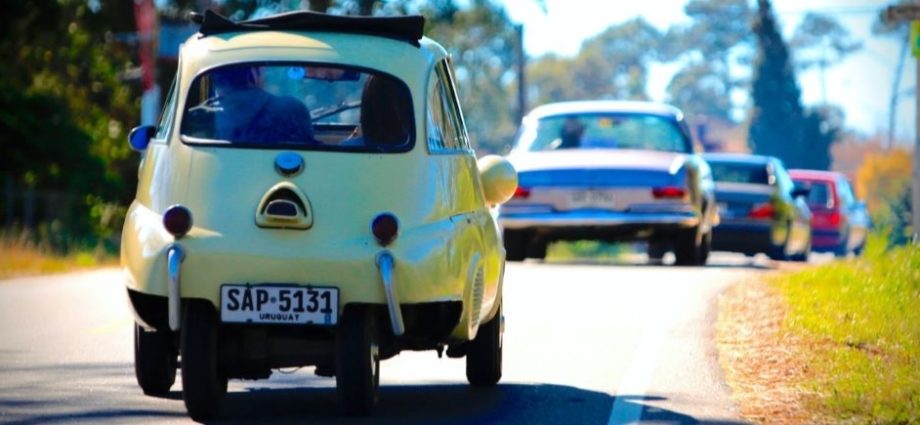“If we’re to protect our right to use historic vehicles on the roads in decades to come, we need to prepare ourselves to communicate forcefully to the world at large what a ‘historic vehicle’ actually is – not simply an ‘old car’ or motorcycle or utilitarian, but an important part of our shared cultural heritage.”
Tiddo Bresters, FIVA President
So says Tiddo Bresters, president of FIVA (the Fédération Internationale des Véhicules Anciens or international federation of historic vehicles), as he explains important changes to the internationally recognised FIVA Identity Card.
“The FIVA ID Card is a powerful way for an owner to establish the credentials of a vehicle, demonstrating its role as a genuine piece of mobile history, worthy of belonging to the ‘moving museum’ that we owe it to future generations to preserve.”
Tiddo Bresters, FIVA President
All Change
But there are two upcoming changes to the FIVA Cards to reflect how the world is changing.
“First,” continues Bresters, “the pandemic has taught us to use digital technology more comprehensively and, as Covid-19 abates, we will still reap the cost-saving, time-saving and environment-saving benefits of an online approach to many previously paper-based activities. Hence from the end of March 2021, no more paper FIVA Card applications will be accepted. They will instead be applied for and processed only via the online application system. Of course, the same physical inspection of the vehicle by an appointed FIVA specialist will be needed, and the stringent requirements [see below] before an ID Card can be issued still stand.
“Secondly, we must embrace the so-called Youngtimers – or younger classic vehicles – and the younger enthusiasts who enjoy them, as they (both vehicles and enthusiasts) are the future of our historic vehicle world. Hence in 2011, we introduced a FIVA Youngtimer Registration Document for vehicles 20-29 years old but which otherwise fit the definition of a historic vehicle – call them ‘historic vehicles in waiting’. From the end of March 2021, these Youngtimer Registration Documents, too, will only be available online. [A physical inspection is not usually needed for Youngtimers, until they hit their 30th birthday to become fully qualified historics.]
“As nations around the globe quite rightly introduce measures to tackle congestion, pollution and road safety issues, we must ensure that our mobile heritage is protected. As the largest classic vehicle organisation in the world, representing historic vehicle owners in more than 70 countries, FIVA’s priority is to enable enthusiasts – and future generations – to continue to own and enjoy historic cars, motorcycles and utility vehicles. The FIVA Card is one small but important part of the battle.
FIVA Cards
The FIVA Identity Card is issued for a historic vehicle, defined as being a mechanically driven (powered) street vehicle (car, motorcycle, utilitarian) that is:
- at least 30 years old
- in a historically correct and maintained state
- not used as everyday transport and is thus part of our technical and cultural heritage
A FIVA Identity Card is only issued after a physical inspection of the vehicle to ensure it complies with the FIVA Technical Code.
Benefits of the FIVA ID Card include:
- extensive independent documentation of vehicle data
- modifications and remodelling recorded on the card
- data and pictures clearly attributed to the vehicle
- national and international recognition that might be reflected in beneficial regulations
- limited validity (10 years or change of owner) that increases credibility
A FIVA Youngtimer Registration Document is issued for a vehicle that is:
- between 20 and 29 years of age
- in good condition and preservation
- generally used during leisure time only
- potentially eligible for a FIVA Identity Card when it becomes 30 years old
The FIVA Youngtimer Registration Document may be issued without a physical inspection of the vehicle.
From the end of March 2021, FIVA Cards may only be requested by using the online application system at www.fivamembers.org









